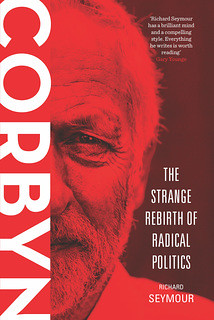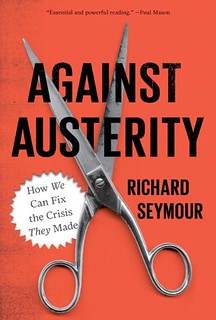Saturday, October 10, 2009
Party like it's 1989 posted by Adam Marks
If 1989 is important it’s because it’s the only commonly agreed year of revolution in living memory. The student-worker uprising in China during the summer was spectacular enough. By the end of the year government after government in Eastern Europe fell into retreat or fell outright. This process was crowned by the fall of the Berlin Wall on November 9th, the anniversary of the revolution in 1918 that toppled the Kaiser and finally ended World War One.1989 happened because a global economic crisis combined with the rocketing pressure of the second cold war to bring down the weaker superpower. The Stalinist Empire, which only 20-30 years previously looked so imposing, had ground to a halt.
Having created a military-industrial complex on the sweat and oppression of millions of working people the Eastern Bloc had built up huge industrial capacity from an impoverished base with little outlet on the world market. This was evidenced by the steep economic and social decline that hit Eastern Europe once it was opened to direct market competition. As the global tendency shifted from protected national economies to the dominance of multi-national corporations the Eastern Bloc began to fall behind.
It also had the added problem that the economy was entirely state owned. In an exploitative society with state ownership of the means of production there cannot be any meaningful democracy.
Western economies had come under great strain since the breakdown of the long boom. This not only caused economic turmoil but also provoked heated class struggle right at the heart of the system. The relative freedom granted in the west meant that this struggle could be diverted. The groups thrown up by the struggle could be absorbed and neutralised.
There was little scope in the east for generating consent. The state had to maintain a constant war against the population. There are numerous examples of grotesque Stalinist oppression. One example: by the end of the DDR anything up to 10% of the population was in the pay of the Stasi, a recipe for social derangement.
This sort of oppression was not a problem when the stalinist system was founded, during the stage of primitive accumulation, when Stalin pitched Russia into making good the 100-year gap with the west in 10 years. As the system developed and expanded westward it became more and more difficult to extract surplus value by squeezing the population.
But attempts at reform tended to result in rebellion, witness the events of 1953, '56 and '68. Any expression of social conflict was liable to become a challenge to the state system, and the state and ruling class were one and the same under stalinism.
The legacy of the revolution was used by the western ruling classes as further evidence (piled on top of their own recent neo-liberal assault) of the decline and death of socialism. Likely readers of this post will know that the above argument is a state capitalist argument. Put simply, what was passed by many (including the western ruling classes) as Actually Existing Socialism was, actually, a system of exploitation of wage labour. At root the systems east and west were the same.
The idea that Russia and its satellites represented some form of socialism must be challenged. It will be overcome as part of the process that creates a new and purposive working class movement at the core of the capitalist system. The working class is the only possible leader in a movement for socialism. Part of the difficulty in overcoming the Actually Existing… argument (however expressed) has been the lack of movement and, therefore, relative unreality of socialism.
Connected with this argument is the line put that this was a good revolution, at last! It was a nice, peaceful, bloodless process, except in China and Romania of course, but there are always exceptions.
This is interesting because the revolutions were not welcomed in as simple manner by the western powers at the time. In his book The Revenge of History, Alex Callinicos lists some of the queer statements from thinkers and heads of state given at the time of the revolutions. They were mostly musing, “whither NATO?” You get the sound of Margaret Thatcher praising the Warsaw Pact as a force for peace and stability. Various defence analysts insisting that the defunct treaty be revived.
There were geopolitical concerns, such as what to do with a reunified Germany. But more than anything else there was a concern about what had been unleashed. Millions of people had been moved by the revolution, the old regime was blown away by great passions that could prove hard to extinguish.
But, aside from the decade-long conflict in the Balkans (a rather large aside), the fires were put out. Within a matter of months, for example, members of Solidarity arguing for austerity measures, job losses and cuts. A common event in post-revolutionary Europe.
The watchwords of the revolution were democracy and freedom. But these are ambiguous terms in need of content. The people who ended up filling these terms were the ones thrown up by the revolution, combinations of well-known dissidents and free market radicals from the old CP. Though they had different motives and came from different directions they had arrived at the same point. The neo-liberal turn had an ideological, as well as economic effect inside the empire.
It could not have harmed that western governments took an interest in these movements. While the US was dealing in counter-revolution on the cheap in places like Nicaragua and Angola it also spent time and money courting the leaders of Solidarity, helping it on its way from radical workers councils to social liberalism. The US government took a similar interest in Serbian revolution and opposition groups such as Otpor.
What became known as revolution after 1989 was a nebulous formula where people appeared on the streets, something happened in government and a ‘revolution’ took place. This trick has been pulled off several times recently, in places like Ukraine, Georgia and Kyrgystan. Others have tried and failed, for example, in Tibet, Lebanon and Zimbabwe.
The missing X factor is outside intervention. The United States has a policy of intervening where it can tip the global balance in its favour. It cultivates client groups within local ruling classes who then (in the absence of any genuine alternative) try to use social conflict as a shoehorn into power.
Two more examples: George Bush declared a democratic revolution for the Middle East and began by invading Afghanistan and Iraq. The men and women chosen to formally rule these ‘liberated’ countries were particularly useless and added to the eventual failure of occupations. The point is, however, we now have imperial game play through ‘revolution’.
The revolutionary grand tour recently swung by Latin America. The upheavals there produced new watchwords. Movements were driven by ideas such as autonomy, popular power and civil rights. The Latin American revolutions put genuine content back into political demands.
Modern capitalists may or may not be facing an immediate crisis such as the one that faced their state capitalist cousins in 1989. Things are unlikely to settle down soon. Whatever the coming struggles there will be a battle on to keep the social and political aspects of the movement linked.
Labels: 1989, Berlin Wall, imperialism, revolution, socialism, stalinism










